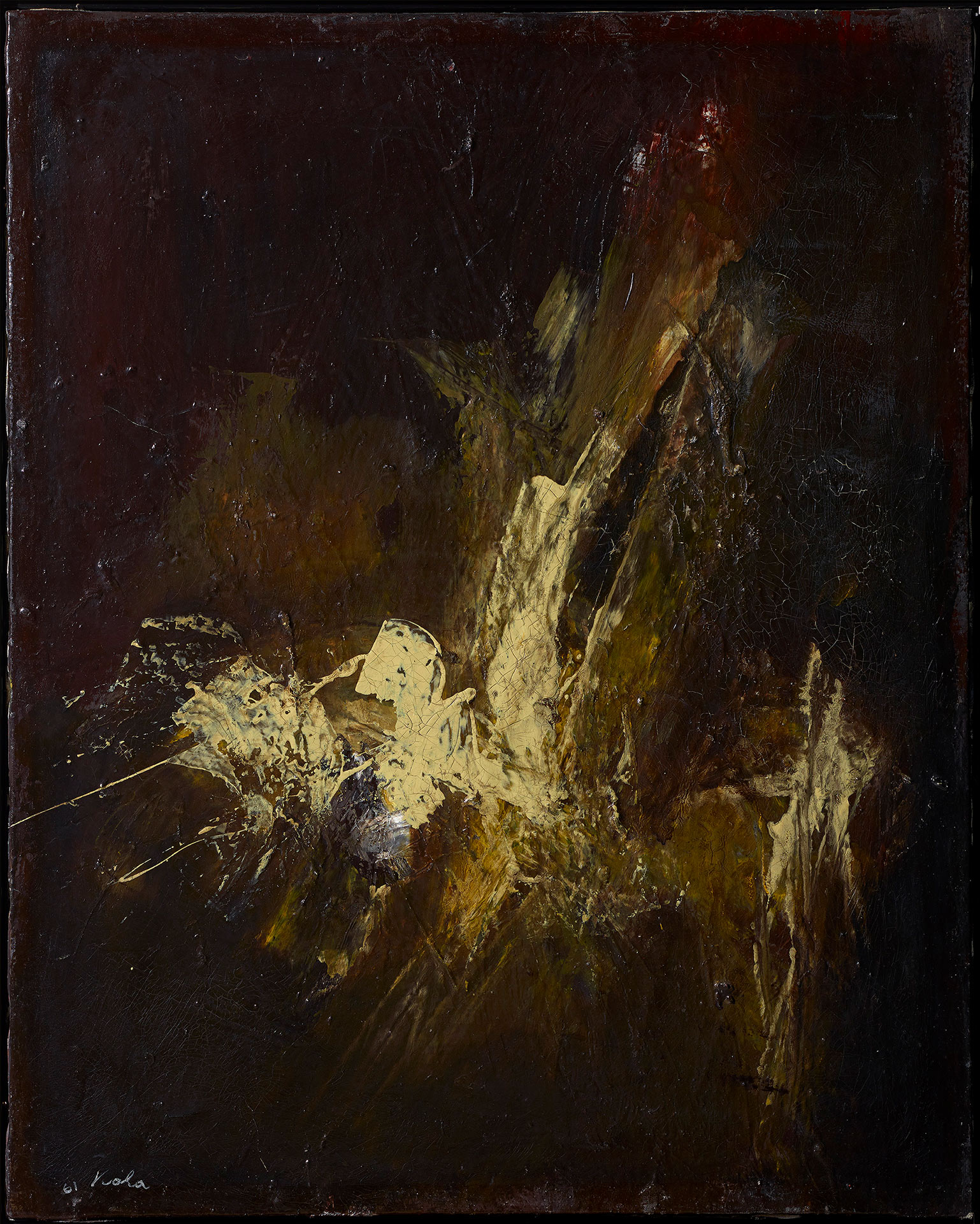
Manuel Viola (Zaragoza, 1916 – San Lorenzo de El Escorial, Madrid, 1987)
Untitled
1961
WORK INFORMATION
Acrylic on canvas, 81 x 65 cm
OTHER INFORMATION
Signed and dated in the lower left-hand corner: "61 Viola"
Manuel Viola, a member of El Paso, had already enjoyed a long and productive career before joining this collective, as he was a generation older than most of the other artists in the group. He got an early start in art and poetry. At a very young age, he began contributing to Art, an important Catalan avant-garde journal in the 1930s. After the Civil War he went into exile, worked with the French Resistance and did not return to Spain until 1949. The years prior to his homecoming were marked by his abandonment of Surrealism and conversion to abstract Art Informel; thus Viola set out on the path of the French avant-garde and eventually became one of its most radical exponents. In this respect, his painting acquired an expressivity and aggressiveness taken to extremes by a limited use of colours applied with violent, rapid, energetic gestures.
That sordid, unsettling style of painting established a correspondence with the world depicted in Goya's Black Paintings, which held a powerful allure for many Spanish painters allied with the Art Informel movement. Like practically his entire oeuvre, Untitled reveals that attraction to Goya's late work as a means of attaining ultimate expressivity.
The other Untitled work from 1961 in the Banco Santander Collection also attests to the revival of Goyesque diction as a modern and relevant way of painting. In the 1960s, many looked to Goya as the model of a politically engaged artist of integrity, seeing him as a painter who rebelled against the prevailing aesthetics of his time and expressed political views contrary to absolutist principles. For the artists of El Paso, who aimed to recover the universal quality of old Spanish painting, Goya was an example to follow. In the "Letter from El Paso no. 3" (written in the summer of 1957), the group stated, "We believe that our art will not be valid unless it contains a restlessness that reflects the signs of the age, making a passionate overture to the most revitalising artistic trends. We are moving towards a revolutionary art—in which our dramatic tradition and our direct expression are present—that historically correlates to a universal activity."
Viola's painting defines, with greater precision than most, the expressivity of a tattered frame of mind by reducing colour to the bare minimum. This reduction strives for colours that reinforce the manifestation of an agonising, existential mood: fundamentally black and white, what has sometimes been called "the colour of the negation of colour". [Víctor Nieto Alcaide]

